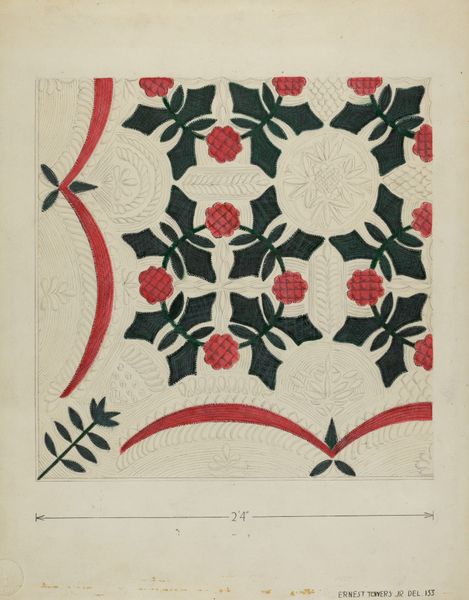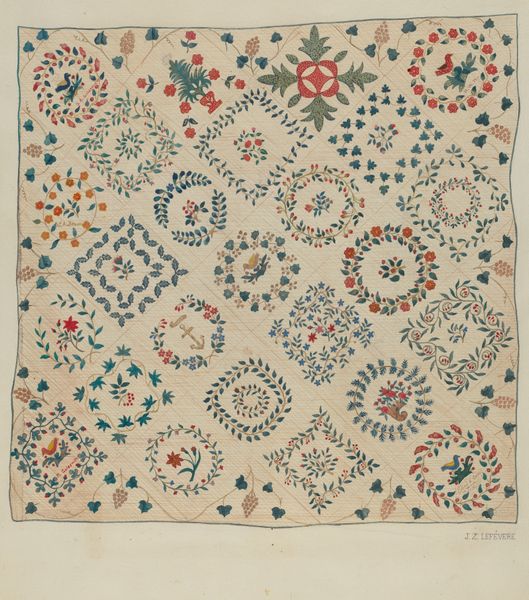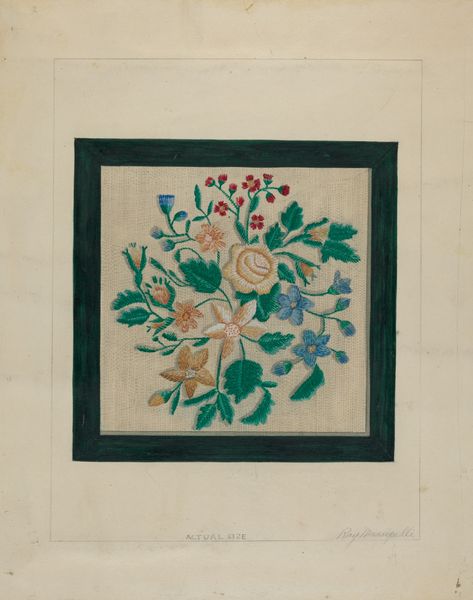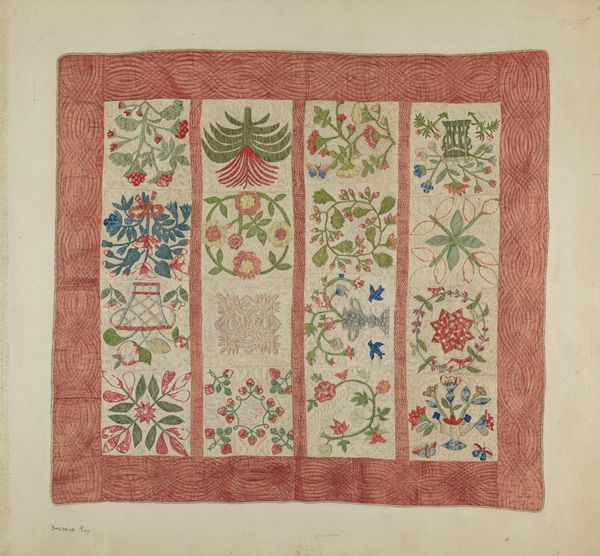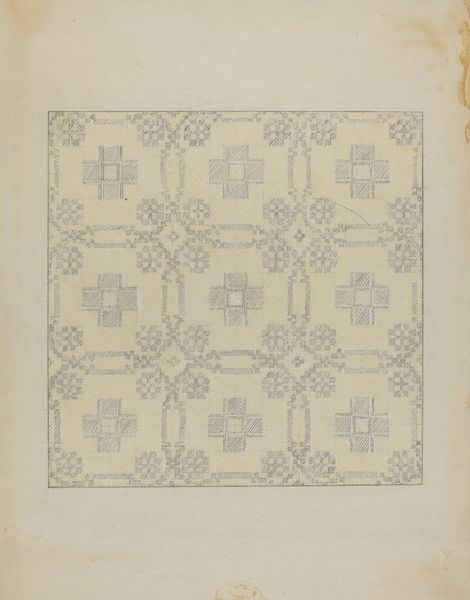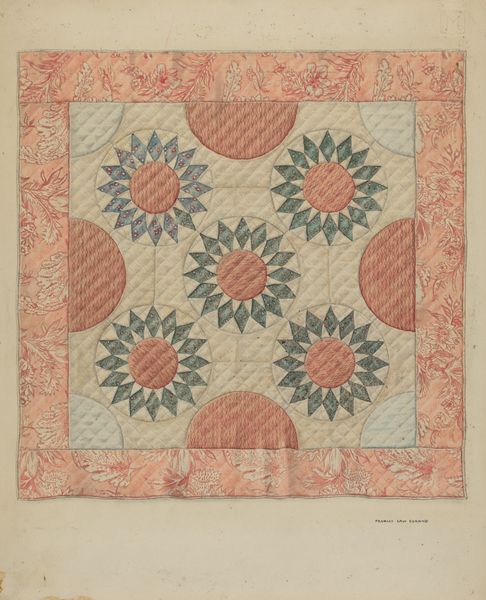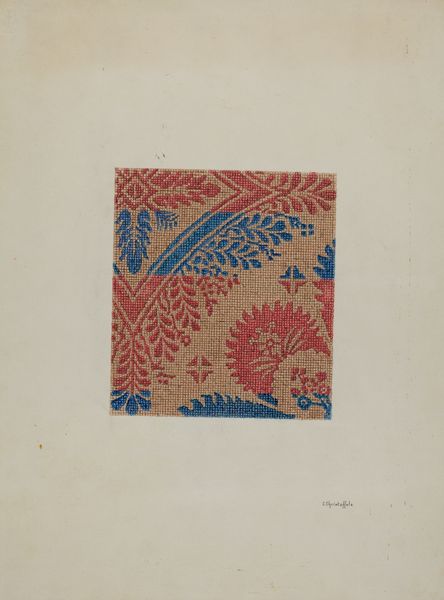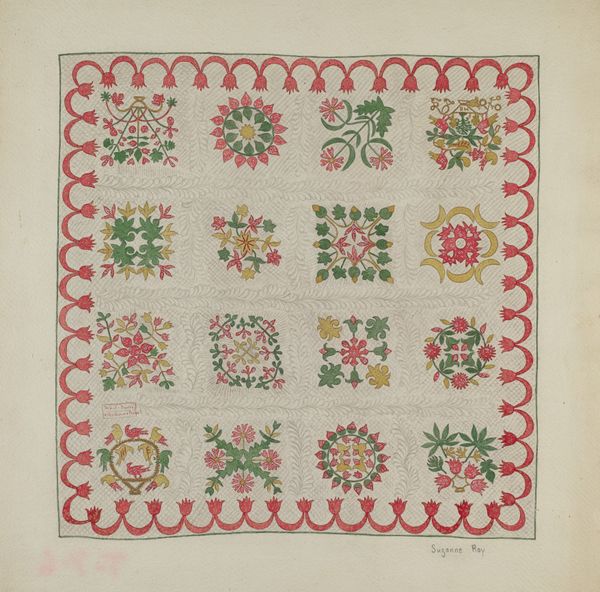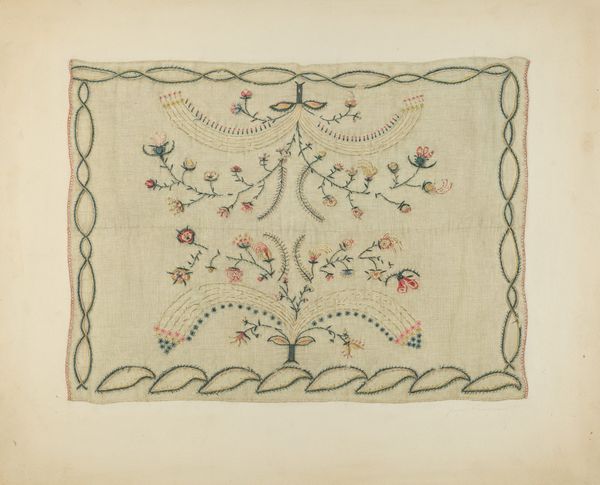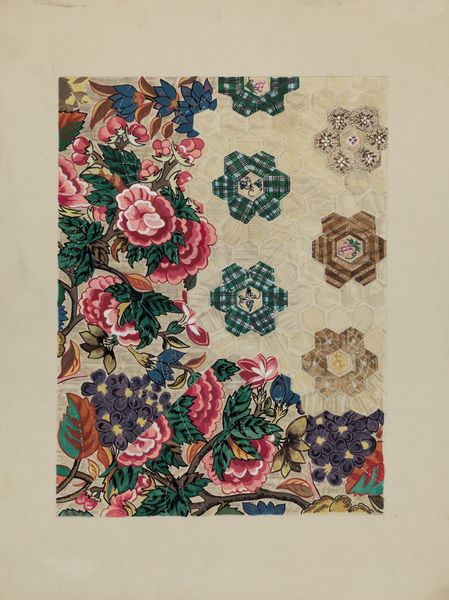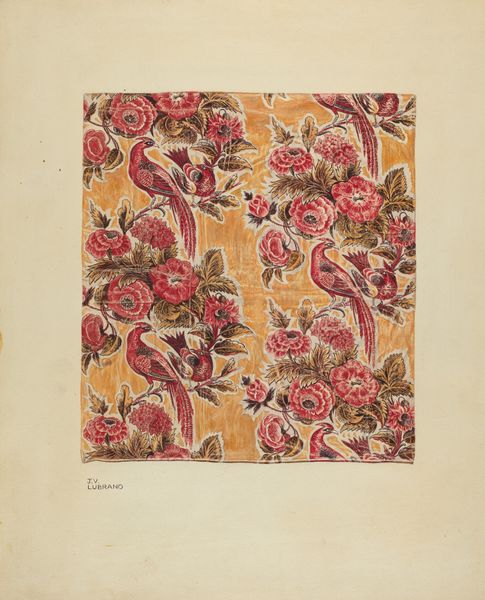
drawing, textile, watercolor
#
drawing
#
water colours
#
textile
#
watercolor
#
folk-art
#
textile design
#
decorative-art
#
watercolor
Dimensions: overall: 45.7 x 39.5 cm (18 x 15 9/16 in.) Original IAD Object: 72" long; 84" wide
Copyright: National Gallery of Art: CC0 1.0
Editor: Here we have "Friendship Quilt," created between 1935 and 1942. It seems to be watercolor on textile, attributed to Flora G. Guerra. The colours are quite muted, and it has this really homey, almost nostalgic feel. What’s your interpretation of this piece? Curator: Well, given its title and creation during the Depression era, it’s tempting to view this through the lens of social history. Quilts often represent community and shared resources, especially during times of economic hardship. Did women in this community contribute individual blocks, perhaps? Editor: That’s a great question. I wonder how the designs were chosen, they are all botanical. Was there someone who chose them, or did the individual makers have autonomy? Curator: That's where the politics of imagery comes in. Even seemingly benign floral motifs can carry coded meanings. Flowers were often used to express sentiments or tell stories, operating almost as a visual language within these communities. The use of drawing and watercolor, however, makes this textile piece very unusual and suggests perhaps this piece represents something slightly removed from its true textile cousins. Do you get that sense? Editor: Yes, because it also is such a literal rendering and reproduction. It could even be an idea for a textile, since textiles require patterns and design. But in what way does it also represent a removal of an idea or representation from its history? Curator: Consider that women were often confined to the domestic sphere during this time, making quilting a powerful form of creative expression and social connection. A "friendship quilt" like this embodies the intricate network of relationships that sustained communities, specifically women in this particular environment. Editor: So it becomes this tangible record of those relationships, not just a decorative object. Curator: Exactly. It’s a public display of private connections, transformed into a collective work of art, commenting on a shared space. So, we've moved from just seeing the object, to thinking about a potential design and all the social connections that it represented.
Comments
No comments
Be the first to comment and join the conversation on the ultimate creative platform.
